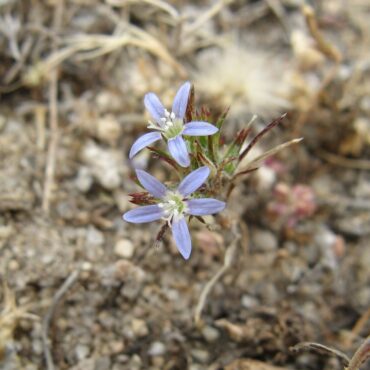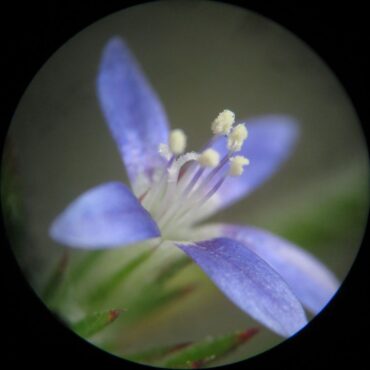Thread-leaved woolly-star (Eriastrum filifolium) is a “belly flower” – a flower rarely spotted from a standing position. Lowering oneself is worth the effort, for the thread-leaved woolly-star has charming little bright-eyed flowers, about half the diameter of a dime and ranging in color from blue to lavender. But watch where you put your hands – and nose – this plant is well armed. Each slim leaf and bract tip is armed with a tiny spine, perhaps as protection against curious mammals.
Thread-Leaved Woolly-Star
Eriastrum filifolium
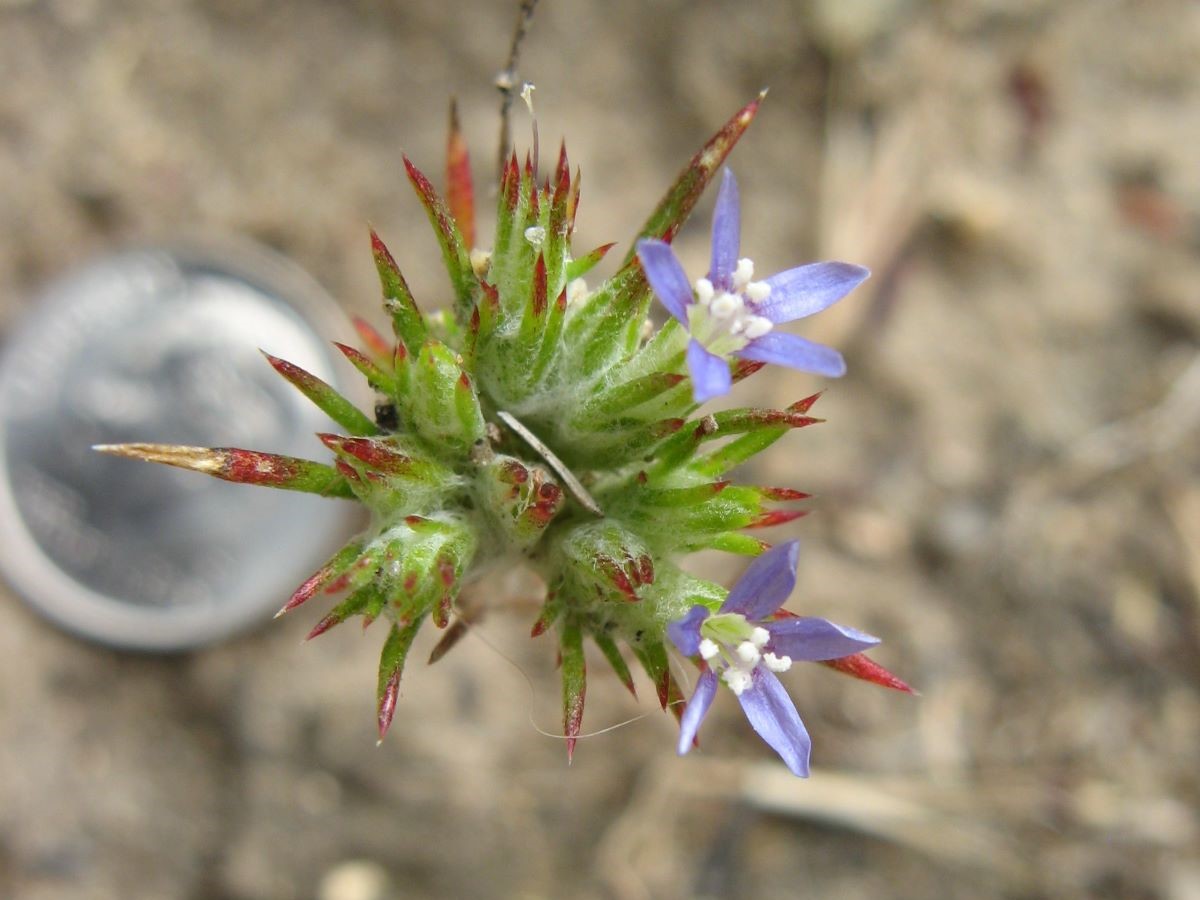
Other Common Names:
Lavender woollystars, Lavender eriastrum, Three-leaf woolstar
Description 2,4
Thread-leaved woolly-star is a diminutive annual plant with one to several erect or ascending stems that are generally less than 15 inches (40 cm) high. The stem is simple or with a few branches, greenish, aging to reddish-brown, sparsely covered with long, white hairs. Leaves are linear, less than 1.5 inches (4 cm) in length, unlobed or with 3-5 linear lobes; each tipped with a tiny reddish-tinged spine.
Flowers are clustered in rounded heads, often at branch tips with three to several flowers per head. Bracts are present, usually 3-5 lobed, tipped with reddish spines. The calyx is tubular, with five unequal, spine tipped lobes. Both bracts and calyx have long white hairs, webbing the flower head in white “wool”. The corolla is radially symmetrical, approximately 3/8th inch across (1 cm) with five petals united below into a tube and flared abruptly outward into narrow lobes. The throat is cream to white. Petals are blue to lavender, often with darker veins. The five stamens are white, attached to lower throat, exserted from the throat but shorter than the petals. There is one superior ovary with a white, three branched style that is slightly longer than the anthers.
The fruit is a three chambered capsule with 3-5 tiny seeds per chamber. Blooms April to July. 468
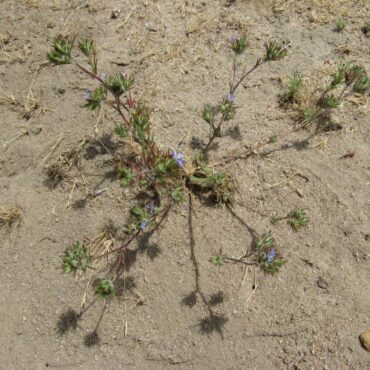


Distribution 7,89
Thread-leaved woolly-star is native to the west coast of North America. The present distribution is centered in southwestern California and northwestern Baja California, below 2500 feet (800 m). It is most common in open areas in chaparral and coastal sage scrub.
In the Reserve it has been found along the trail from Santa Carina Trailhead, often in small breaks in the sage scrub.
Learn more about plant vegetation types here
Classification 2,11,143,310
Thread-leaved woolly-star is a member of the phlox family (Polemoniaceae), a family of plants largely adapted to arid climates. Flowers are radially symmetrical and bisexual, They have five petals, five sepals and five stamens. Petals form a tube at the base which opens out into a flat face of single petals. The ovary is three-parted and the fruit is a dry capsule.
The phlox family occurs worldwide with 18 genera. Several members are cherished garden flowers with showy flower clusters. There are five species in the Reserve, each from a different genus.48
Alternate Scientific Names:
Gilia filifolia
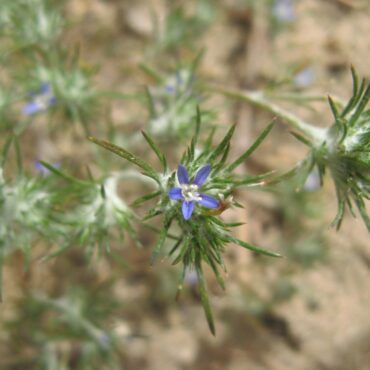
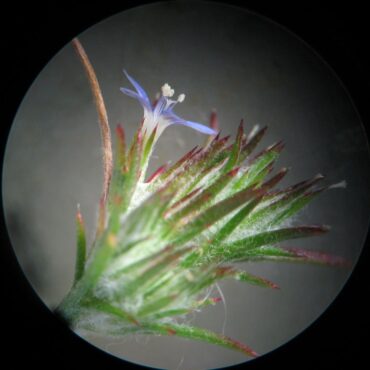
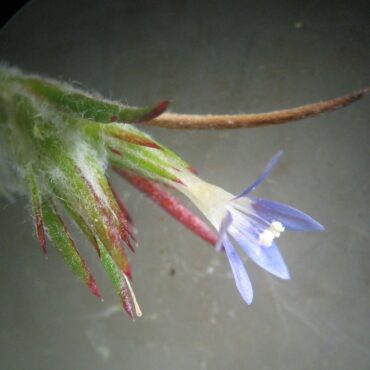
Ecology 41,45
The California Native Plant Society (CNPS) compiles and constantly updates the Inventory of Rare and Endangered Plants of California. This list includes information on the areal extent and severity of the threat of extinction, summarizing information from state and federal agencies as well as the scientific community. The list is widely used for scientific research, conservation and preservation, and for planning and enforcement of environmental regulations.
Even tiny little plants like the thread-leaved woolly-stars receive consideration for listing by CNPS. Our little woolly-stars were found to be too common to be listed as rare. Instead, they received the designation: CBR – Considered but Rejected. It’s not often that rejection is a positive thing!
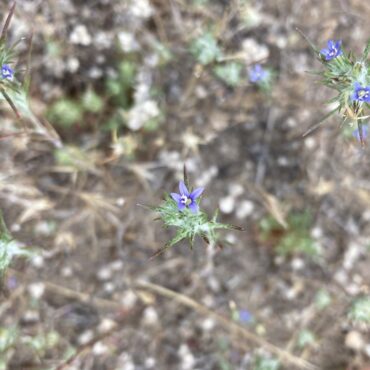
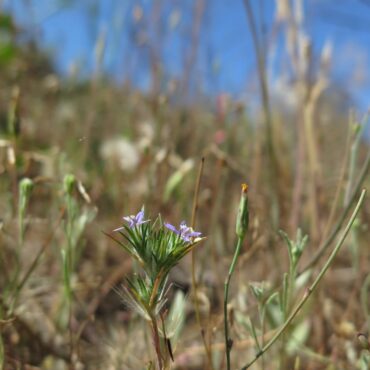
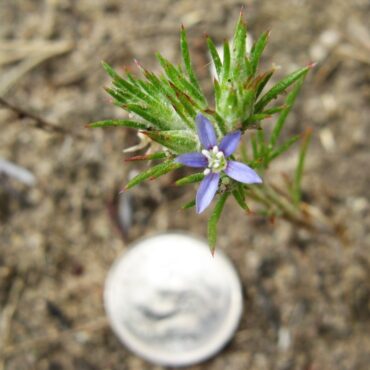
Human Uses 282
We know of no use of thread-leaved woolly-star by local tribes. However, both the Shoshoni and the Paiute tribes in Nevada used this plant medicinally, as an external bath for rheumatic pain, and as a cathartic or emetic.

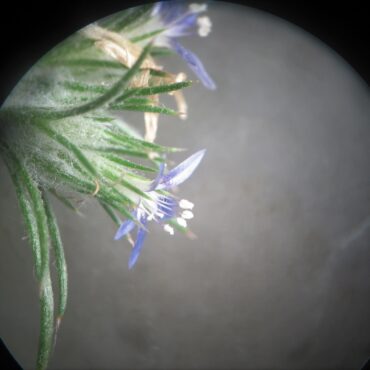
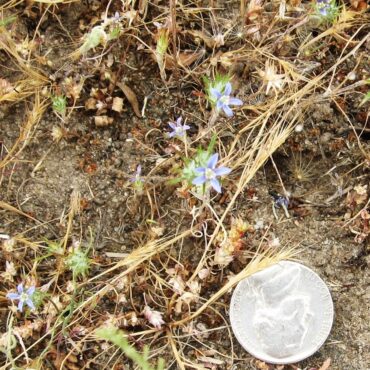
Interesting Facts 556
The term “belly flower” may have originated nearly 70 years ago (1955) at the Julian Apple Day in the mountains near San Diego: “Tiny, vivid ‘belly-flowers,’ so called because you must stretch on the ground to see them properly in their natural state.” The term has spread through the botanical vocabulary of southern California, but little further.

